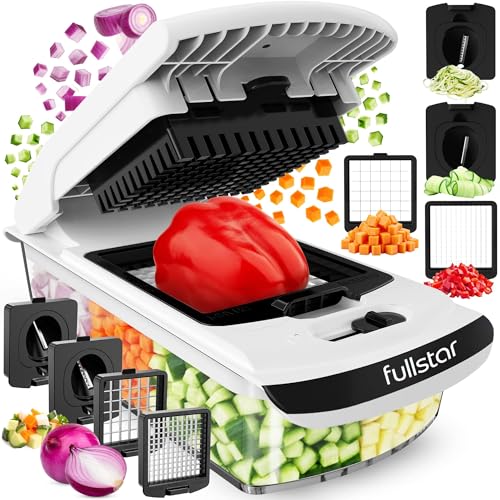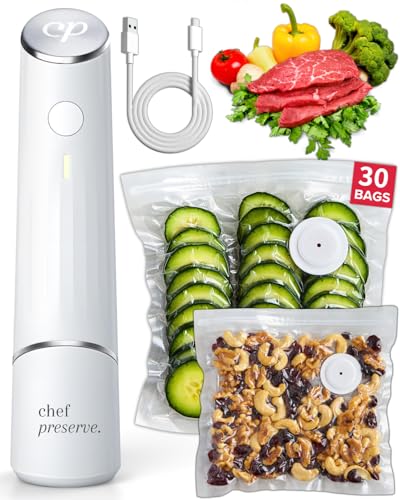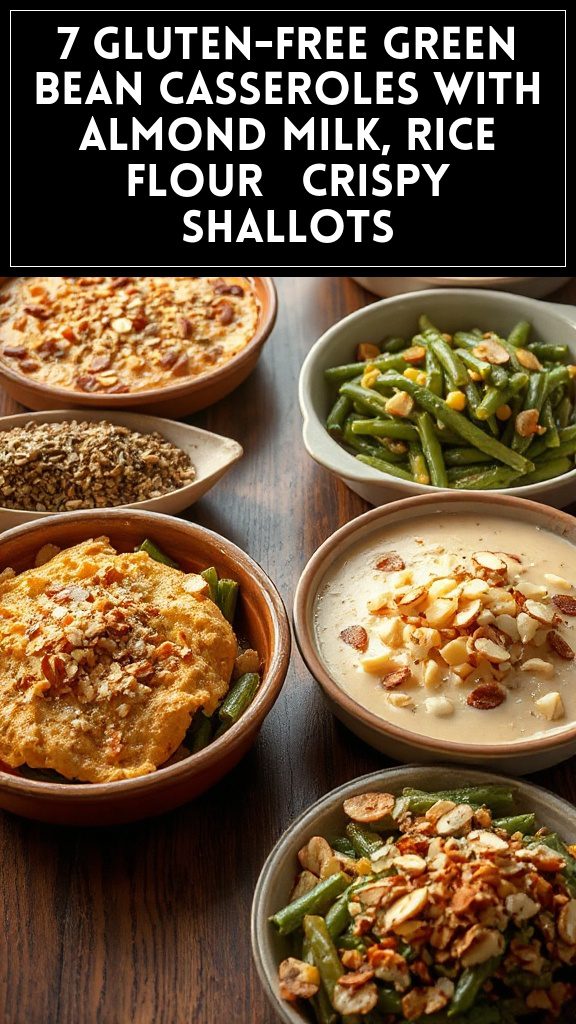Cake’s American Origins
The red velvet cake, an emblem of American culinary innovation, first emerged in the early 20th century, likely from Southern kitchens where bakers experimented with cocoa, buttermilk, and a distinctive red hue to create a visually striking dessert.
Its historical evolution involved adapting wartime ingredients, enhancing flavor profiles through acidity.
Culturally, it impacted festivities, symbolizing Southern heritage and communal joy in American baking traditions.
- The Original Pro Chopper - Our superstar veggie slicer has been creating waves on TikTok! Simple to use,...
- Easy Meal Prep with Rust-Resistant Blades - Our vegetable chopper is perfect for anyone who wants to eat...
- 5-Star Design - The soft-grip TPU handle ensures controlled chopping, while the non-skid rubber base...
Red Velvet Fans
Across diverse demographics, red velvet enthusiasts passionately champion the cake’s distinctive blend of tangy cocoa and vivid crimson, transforming it into a cultural staple.
These fans express creativity through fan art, meticulously rendering the cake’s layers with technical precision, while online forums serve as hubs for debates, idea exchanges, and community building among devoted connoisseurs.
- Makes Everything Simple : Just forget your bagged cheese! Only turn the handle for several times and get...
- Premium Material : All parts of the rotary cheese grater are made of food grade ABS material, no BPA. The...
- Three Option Grater : The parmesan cheese grater finishes food preparation with slicing, shredding and...
Essential Ingredients

Essential ingredients for a naked red velvet cake include flour as the structural base, cocoa powder for subtle tang, buttermilk to enhance moisture and acidity, baking soda and vinegar for leavening reactions, red food coloring for its iconic hue, sugar for sweetness, eggs for binding, and butter or oil for richness, each selected to balance flavor, texture, and visual appeal.
Ingredient sourcing demands fresh, high-quality sources, while storage methods, like refrigeration, preserve potency and extend shelf life.
- 💰 REDUCE WASTE AND SAVE MONEY: Chef Preserve keeps FOOD FRESH 5 TIMES LONGER than non-vacuum storage...
- ✅ POWERFUL, QUICK & EASY TO USE: Simply press the button to start. The device vacuum seals a bag in 5...
- ♻️ REUSABLE & RESEALABLE BAGS: Chef Preserve comes with dishwasher, freezer, refrigerator, and...
Cooking Steps
With ingredients assembled, the cooking process for a naked red velvet cake commences by precisely combining dry elements—flour, cocoa, and sugar—with wet components like buttermilk, eggs, and oil in a methodical sequence to activate leavening agents and achieve uniform batter consistency, setting the stage for baking at 350°F for optimal rise and moisture retention.
Sautéing techniques and grilling methods creatively enhance distribution.
- Generous Capacity: 7-quart slow cooker that comfortably serves 9+ people or fits a 7-pound roast
- Cooking Flexibility: High or low slow cooking settings, with convenient warm function for ideal serving...
- Convenient: Set it and forget it feature enables you to cook while at work or performing daily tasks
1. Preheat Oven

Before introducing the batter to the oven, preheating to 350°F ensures uniform heat distribution, which promotes even rising and prevents uneven baking in the red velvet cake.
For oven safety, conduct routine appliance maintenance to eliminate risks, ensuring the oven operates efficiently.
This practice not only enhances safety but also maintains the appliance’s longevity, allowing for highly consistent and creative baking results.
- 100% Leak-proof: Guaranteed no-spill seal and secure latches
- Crystal-clear Tritan Built: Stain-resistant and odor-resistant material for a clear view of contents
- Lightweight & Sturdy: Easy to carry, yet durable for everyday use
2. Mix Dry Ingredients

Mixing the dry ingredients establishes a uniform base for the red velvet cake, incorporating flour, cocoa powder, baking soda, and salt to prevent clumping and ensure even integration with wet components.
Effective blending methods, such as sifting or whisking, serve as key uniformity techniques to distribute particles evenly, avoiding inconsistencies and fostering a homogeneous mix that supports flawless texture.
- 𝗘𝗳𝗳𝗼𝗿𝘁𝗹𝗲𝘀𝘀 𝗪𝗲𝗶𝗴𝗵𝗶𝗻𝗴: Supports 5 units...
- 𝗣𝗿𝗲𝗰𝗶𝘀𝗲 𝗥𝗲𝘀𝘂𝗹𝘁𝘀: Accurately weighs up to 11 lb/5 kg with 1 g...
- 𝗦𝗶𝗺𝗽𝗹𝗲 & 𝗖𝗼𝗺𝗽𝗮𝗰𝘁: The small and sleek scale is a perfect fit for...
3. Add Wet Ingredients

After preparing the dry ingredients, incorporate the wet components—such as eggs, buttermilk, and oil—into the mixture to activate chemical reactions and enhance moisture. In a technical approach, adding Wet Ingredients requires awareness of potential Allergic Reactions from allergens like eggs and dairy. This precise step ensures a homogeneous blend, enhancing the cake’s moisture and texture through creative emulsification and integration, while fostering a silky consistency.
- Instant Read Food Thermometer | Our instant read thermometer features a temperature probe and advanced,...
- Multi-Use | From bbq thermometer to baking thermometer, our digital food thermometer for cooking is...
- Easy-Read Digital Thermometer For Cooking | Large instant thermometer dial with bright blue backlight...
4. Bake Cake Batter

Once the wet ingredients integrate into a uniform batter, baking proceeds by preheating the oven to 350°F (175°C) for even heat distribution, initiating Maillard reactions that develop the cake’s signature color and tenderness.
Batter innovations, like optimized aeration techniques, enhance uniformity and rise.
Sustainable baking incorporates energy-efficient ovens and eco-friendly ingredients, minimizing waste while preserving texture and flavor integrity.
- Versatile 54-Piece Collection: Elevate your kitchen with the Home Hero 54-Piece Kitchen Utensil Set, a...
- Durable and Long-Lasting: Crafted from premium stainless steel, these kitchen utensils are designed to...
- Perfect Holiday Gift: Delight your loved ones with this kitchen utensils gift set this festive season....
5. Add Crème Fraîche

Incorporating Crème Fraîche into the red velvet cake introduces a velvety tang and moisture that refines texture without overwhelming the base. This ingredient’s global uses, from French patisserie to Asian-inspired adaptations, enhance emulsion and acidity for precision.
However, for those with lactose intolerance, plant-based substitutes maintain moisture integrity, ensuring technical harmony in the cake’s structure.
- 24-ounce insulated stainless-steel water bottle with a FreeSip spout and push-button lid with lock
- Patented FreeSip spout designed for either sipping upright through the built-in straw or tilting back to...
- Protective push-to-open lid keeps spout clean; convenient carry loop doubles as a lock
6. Cool the Cake

The cake, freshly enriched with Crème Fraîche, undergoes cooling to stabilize its crumb and enhance moisture distribution.
Effective Cooling Methods include rack-based air exposure or gentle refrigeration to avoid sogginess.
Temperature Tips recommend 20-25°C for optimal setting, preventing condensation while promoting even hydration.
Monitor progress with a thermometer, ensuring precise thermal balance for creative texture refinement.
7. Layer the Cake

Layering the cake begins with aligning the cooled components to create a stable, multi-tiered structure.
To achieve texture contrasts, alternate red velvet layers with crème fraîche, introducing creamy smoothness against the cake’s tender crumb.
Presentation ideas emphasize exposed edges, revealing vivid red hues and irregular surfaces for an artisanal, visually dynamic effect that highlights layered depth and tactile variety.
Serving and Pairing Suggestions

As the cake’s layers settle, serving a naked red velvet creation demands precise techniques to maintain its exposed texture and visual appeal; for instance, use a sharp serrated knife for clean slices that preserve the cake’s vibrant edges.
Pairing thoughtfully enhances the experience:
- Wine Pairings: A light-bodied Pinot Noir contrasts the crème fraîche’s tang subtly.
- Beverage Options: Sparkling water with lemon refreshes, balancing rich flavors.
- Creative integrations: Herbal infusions amplify the cake’s earthy notes without overpowering.
Tips and Variations

Exploring variations enhances the naked red velvet cake’s adaptability, allowing bakers to refine techniques for texture and presentation.
While introducing subtle ingredient swaps, such as almond flour for a nuttier crumb or natural dyes for deeper hues, all without compromising structural integrity.
Key tips:
- For Vegan Alternatives, replace dairy with coconut milk and oils to preserve moisture.
- Apply Freezing Techniques by wrapping layers in foil, freezing for up to two months.
- Innovate with complementary swaps for enhanced, precise flavor profiles.
Kitchen Tools
Essential kitchen tools play a pivotal role in crafting a naked red velvet cake, enabling precise control over mixing, baking, and assembly to achieve optimal texture and presentation. Emphasizing Ergonomic Designs in tool selection reduces physical strain during preparation, while diligent Tool Maintenance prevents contamination and extends tool longevity. Key tools are outlined below:
| Tool | Purpose | Maintenance Tips |
|---|---|---|
| Mixing Bowl | Blend ingredients evenly | Hand wash and dry |
| Electric Mixer | Achieve smooth batter | Clean after each use |
| Measuring Cups | Ensure accurate portions | Store in dry conditions |
| Spatula | Gently fold mixtures | Inspect for wear |
| Baking Pan | Promote even heat | Grease and season |
Essential Equipment
Beyond basic kitchen tools, specialized equipment underpins the flawless execution of a naked red velvet cake, delivering precise temperature control and structural integrity essential for its layered form.
Embracing Equipment Trends, bakers prioritize:
- Digital scales for precise measurements, aligning with modern accuracy demands.
- Convection ovens for even heat distribution, enhancing baking consistency.
- Silicone baking mats, sourced via efficient Sourcing Methods like online retailers and local suppliers for durability.
Nutritional Information (Estimated, per serving)
The estimated nutritional breakdown per serving of a naked red velvet cake, based on standard recipes, includes approximately 350 calories, 15 grams of fat (with 9 grams saturated), 45 grams of carbohydrates (including 25 grams of sugar), and 5 grams of protein, underscoring the dessert’s indulgent yet measurable dietary footprint for informed consumption. The calorie breakdown emphasizes nutrient sources like fats from butter and carbs from flour, as visualized below.
| Nutrient | Amount per Serving | Source |
|---|---|---|
| Calories | 350 | Fats, carbs, protein |
| Fat | 15g | Butter, oils |
| Carbohydrates | 45g | Flour, sugar |
| Protein | 5g | Eggs, dairy |
Naked Cake Variations

Naked red velvet cakes encompass a range of variations that modify core ingredients or techniques, such as substituting almond flour for wheat to reduce gluten or incorporating citrus zests for enhanced flavor profiles, thereby expanding the dessert’s adaptability while preserving its layered aesthetic.
Incorporating holiday motifs and cultural influences, key variations include:
- Integrating holiday motifs for festive, thematic decorations that enhance seasonal appeal.
- Drawing from cultural influences to infuse exotic spices, reflecting diverse heritages.
- Experimenting with creative substitutions for innovative, personalized textures.
Troubleshooting
Even when executing a naked red velvet cake recipe with precision, bakers may encounter issues such as uneven layering, crumb separation, or color inconsistencies, necessitating targeted solutions to maintain the dessert’s signature aesthetic and texture.
To mitigate allergy alerts, scrutinize ingredients for dairy in crème fraîche and common triggers.
For waste reduction, repurpose uneven layers into crumbs for decorations, minimizing discards while fostering sustainable baking efficiency.
Conclusion
As bakers refine their techniques through troubleshooting and innovation, the naked red velvet cake emerges as a harmonious blend of visual appeal and textural precision, ultimately elevating everyday baking into an artful expression of efficiency and sustainability.
Effective closure techniques, such as restrained frosting applications, ensure structural stability and aesthetic finesse.
Summary methods consolidate key innovations, fostering iterative improvements for sustainable, precise baking outcomes.
















